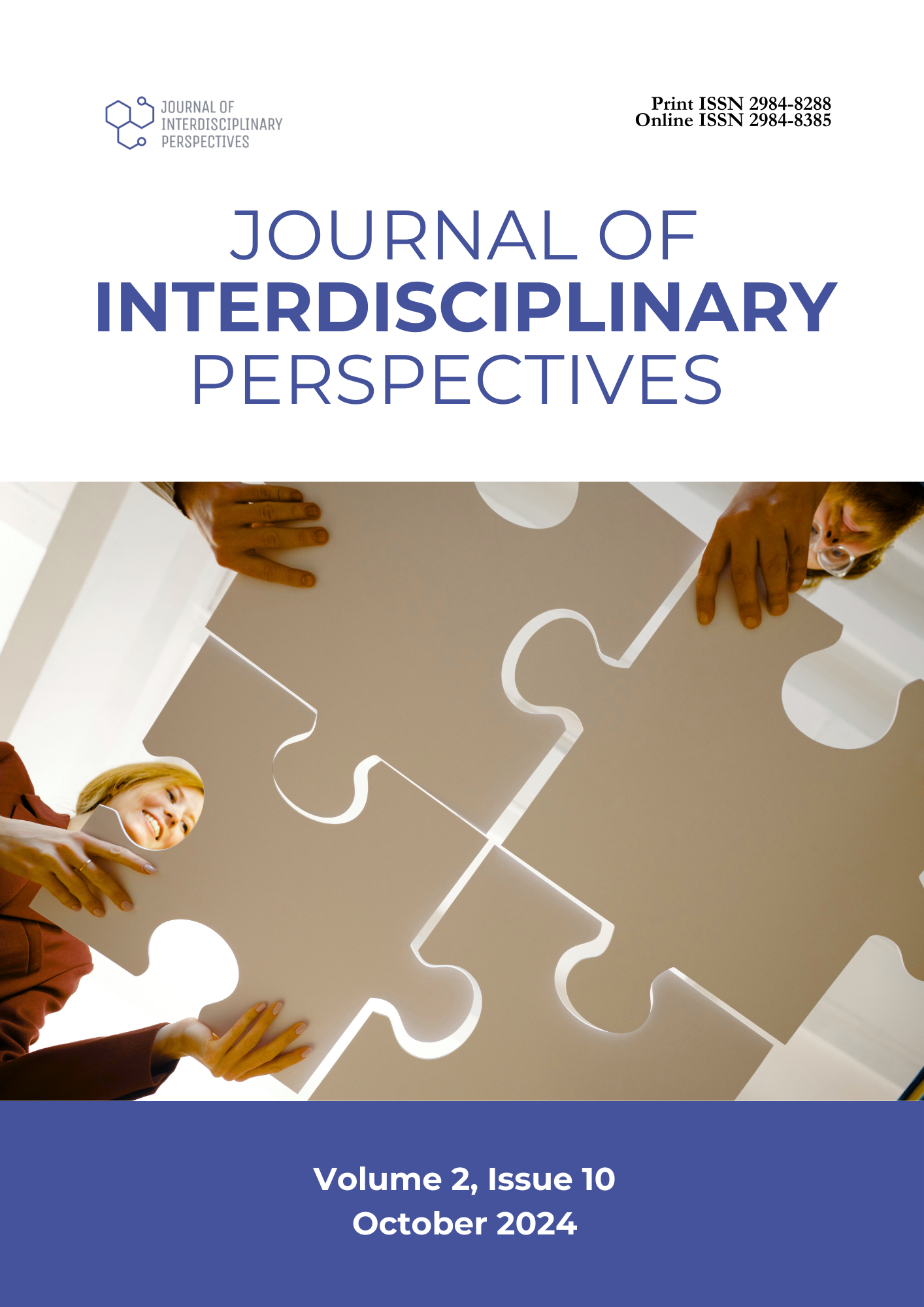From Theory to Practice: The Impact of Communities of Practice Implementation on Out-Of-School Youth
DOI:
https://doi.org/10.69569/jip.2024.0457Keywords:
Communities of Practice, Out-of-school youthAbstract
Communities of Practice (CoP) aims to provide services and skills to partner communities while establishing links to communicate learned knowledge to broader groups of people. This study identified and analyzed the impact of communities of practice in Barangay Nagtenga, Sta. Cruz, Ilocos Sur. It used a mixed quantitative and qualitative study approach to evaluate the level of satisfaction of the 18 CoP participants as well as their CoP learning and experience. The data demonstrated high levels of CoP satisfaction, notably with resource speakers and the quality of service provided. Participants shared their learning experiences during the CoP, focusing on knowledge acquisition, skill development, learning transfer to practice, and entrepreneurial management. This study emphasizes the importance of CoPs in empowering marginalized groups and promoting personal and professional development. Recommendations include maintaining and growing CoP initiatives and conducting frequent evaluations to ensure continuous improvement.
Downloads
References
Bengtsson, M. (2016). How to plan and perform a qualitative study using content analysis. Nursing Plus Open, 2(0), 8-14. https://doi.org/10.1016/j.npls.2016.01.001
Bhandari, P. (2020). An Introduction to Quantitative Research. Retrieved from https://www.scribbr.com/methodology/quantitative-research
Birkinshaw, J., & Haas, M. (2017). Increase Your Return on Failure. Retrieved from https://hbr.org/2016/05/increase-your-return-on-failure
Brown, J. S., & Duguid, P. (2001). Knowledge and organization: A social-practice perspective. Organization Science, 12(2), 198-213. https://doi.org/10.1287/orsc.12.2.198.10116
Ceballos, X. (2023, September 24). PSA: Nearly 20% of Filipino children not in school. Manila Bulletin. Retrieved from https://rb.gy/qxx4x0
Cohen, D., & Prusak, L. (2001). In Good Company: How Social Capital Makes Organizations Work. Retrieved from https://rb.gy/djxt0n
Garcia, L. T., & Hernandez, R. P. (2019). The impact of Communities of Practice on rural education in the Philippines. Journal of Rural Education, 35(2), 123-145. https://rb.gy/o3pfir
Hildreth, P., & Kimble, C. (2004). Knowledge Networks: Innovation Through Communities of Practice. Information Age Publishing.
Jones, B., & Brown, C. (2019). Building Social Capital in Marginalized Communities: The Role of Communities of Practice. Community Development Journal, 54(2), 243-258.
Kimble, C., & Hildreth, P. (2015). Communities of Practice: Creating Learning Environments for Educators. Retrieved from http://www.chris-kimble.com/CLEE/ToC.html
Kwandrans, K. (2020). One Step Toward Success: Motivation for Reengagement for Out of-School Youth. Retrieved from https://rb.gy/tv2p0i
Lave, J., & Wenger, E. (1991). Situated Learning: Legitimate Peripheral Participation. Retrieved from https://psycnet.apa.org/record/1991-98963-000
Lesser, E. L., & Storck, J. (2001). Communities of practice and organizational performance. IBM Systems Journal, 40(4), 831-841. https://doi.org/10.1147/sj.404.0831
McDermott, R., & Archibald, D. (2010). Harnessing Your Staff's Informal Networks. Harvard Business Review, 88(3), 82-89. https://hbr.org/2010/03/harnessing-your-staffs-informal-networks
Pantaleon, A. P. (2022). Development and Validation of Instructional Material in Basic Calculus. International Journal of Innovative Science and Research Technology, 7(5), 228-232. https://bit.ly/3IIfn9N
Parasuraman, A., Zeithaml, V. A., & Berry, L. L. (1988). SERVQUAL: A multiple-item scale for measuring consumer perceptions of service quality. Journal of Retailing, 64(1), 12–40. https://psycnet.apa.org/record/1989-10632-001
Porfírio, J. A., Carrilho, T., Jardim, J., & Wittberg, V. (2022). Fostering entrepreneurship intentions: The role of entrepreneurship education. Journal of Small Business Strategy, 32(1), 1-10. https://doi.org/10.53703/001c.32489
Preece, J. (2004). Etiquette online: From nice to necessary. Communications of the ACM, 47(4), 56-61. https://doi.org/10.1145/975817.975845
Semertzaki, E. (2011). Components of a knowledge management system at a special library. In Special Libraries as Knowledge Management Centres (pp. 121–186). Elsevier.
Stephenson, K. (2014). The Quantum Theory of Trust: A Model of Knowledge Sharing in Complex Organizations. Retrieved from https://www.strategy-business.com/article/20964
Tenny, S., Brannan, J. M., and Brannan, G. D. (2022). “Qualitative study”, in StatPearls. Treasure Island, FL: StatPearls Publishing.
Trayner, E. and Trayner, B. (2015). Learning in Landscapes of Practice: Boundaries, Identity, and Knowledgeability in Practice-Based Learning. Routledge
Vayachuta, P., Ratana-Ubol, A., & Soopanyo, W. (2016). The study of ‘out-of-school’ children and youth situations for developing a lifelong education model for ‘out-of-school’ children and youth. SHS Web of Conferences, 26(0), 1-5. https://doi.org/10.1051/shsconf/20162601015
Vito, M. P., Niones, A. E., & Dellosa, D. V. (2018). Factors influencing out-of-school youth in the municipality of Clarin, Bohol. International Journal of English Literature and Social Sciences, 3(6), 1023-1025. https://doi.org/10.22161/ijels.3.6.16
Wang, H. and Hsu, C. (2015). The Impact of Choice on EFL Students’ Motivation and Engagement with L2 Vocabulary Learning. Taiwan Journal of TESOL, 12(2), 1-40. https://eric.ed.gov/?id=EJ1078804
Wenger, E. (1998). Communities of Practice: Learning, Meaning, and Identity. Retrieved from https://psycnet.apa.org/record/1998-06054-000
Wenger, E., & Snyder, W. (2000). Communities of practice: The organizational frontier. Harvard Business Review, 78(1), 139-145. https://hbr.org/2000/01/communities-of-practice-the-organizational-frontier
Downloads
Published
How to Cite
Issue
Section
License
Copyright (c) 2025 Journal of Interdisciplinary Perspectives

This work is licensed under a Creative Commons Attribution-NonCommercial 4.0 International License.








